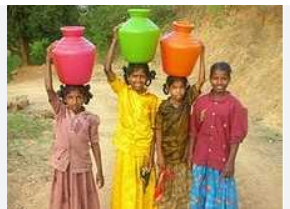Water supply and Sanitation in India
Water supply and sanitation in India have been a major concern for the country, with a significant portion of the population lacking access to safe drinking water and adequate sanitation facilities. The Indian government has been making efforts to address these issues through various initiatives and programs, but there is still a long way to go to ensure universal access to these basic necessities.
Water Supply
India has a diverse range of water sources, including rivers, lakes, groundwater, and rainwater. However, the country faces significant challenges in providing safe and reliable water supply to its population.
The Indian government has launched several initiatives to improve water supply, such as the National Rural Drinking Water Programme (NRDWP) and the Jal Jeevan Mission (JJM). The NRDWP aims to provide safe and adequate drinking water to all rural households, while the JJM aims to provide piped water supply to all households by 2024.
Sanitation
Sanitation is another major challenge in India, with a large portion of the population lacking access to adequate sanitation facilities.
The Indian government has launched several initiatives to improve sanitation, such as the Swachh Bharat Mission (SBM) and the Atal Mission for Rejuvenation and Urban Transformation (AMRUT). The SBM aims to achieve an open defecation-free India by 2019, while the AMRUT focuses on providing basic services, including sewerage and septage management, to urban households.
Challenges and Way Forward
Despite the various initiatives and programs launched by the Indian government, there are still significant challenges in ensuring universal access to safe water supply and sanitation.
To address these challenges, there is a need for a comprehensive and integrated approach to water and sanitation management in India. This requires greater coordination and collaboration among different stakeholders, including government agencies, civil society organizations, and the private sector. Some of the key strategies that could be adopted include:
- Integrated Water Resources Management (IWRM): IWRM is a holistic approach to water management that considers the various uses of water, including drinking, irrigation, industry, and ecosystem services, and seeks to optimize the allocation and use of water resources in a sustainable and equitable manner.
- Decentralized Sanitation Solutions: Decentralized sanitation solutions, such as on-site sanitation systems and fecal sludge management, can be more cost-effective and sustainable than centralized sewerage systems, particularly in rural and peri-urban areas.
- Public-Private Partnerships (PPPs): PPPs can help mobilize private sector investment and expertise in the water and sanitation sector, while ensuring that the services remain affordable and accessible to the poor.
- Capacity Building and Training: There is a need for greater investment in capacity building and training of the workforce in the water and sanitation sector, including engineers, technicians, and community workers.
- Research and Innovation: There is a need for greater research and innovation in the water and sanitation sector, including the development of low-cost and appropriate technologies, the use of data and analytics for better decision-making, and the adoption of circular economy principles for resource recovery and reuse.
While the country has made significant progress in recent years, there are still major challenges that need to be addressed to ensure universal access to these basic services. This requires a concerted effort from all stakeholders, including the government, civil society, and the private sector, to adopt a comprehensive and integrated approach to water and sanitation management.


